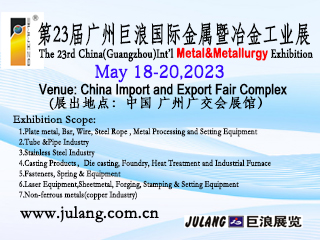China's iron and steel industry reported a 1.9-fold year-on-year increase in profits in the first three quarters, showing an improvement from a year earlier, Jiang Wei, vice-chairman and secretary-general of the China Iron and Steel Association, said at a press conference on Friday.
However, the sector still faces pressure to balance supply and demand, he added, and steelmakers must exercise greater self-discipline in the fourth quarter by curbing production and cutting inventories to avoid disorderly price competition.
During the first three quarters, industry revenue fell at a slower pace than costs. Major steel enterprises recorded a combined operating revenue of 4.56 trillion yuan, down 2.36 percent year-on-year, while operating costs dropped 3.88 percent to 4.26 trillion yuan — a 1.52-percentage-point difference between the two declines.
Total profits reached 96 billion yuan, up nearly double year-on-year, while the average sales profit margin stood at 2.10 percent, an increase of 1.39 percentage points from a year earlier.
Steel output and apparent consumption both continued to decline. In the first three quarters, China produced 746 million metric tons of crude steel, down 2.9 percent year-on-year, and is expected to maintain a decline for the full year, meeting the crude steel output control target.
Apparent consumption of crude steel stood at 649 million tons during the same period, down 5.7 percent year-on-year. It is expected to fall below the previous year's mark for the fifth consecutive year. Overall, both output and consumption are trending downward, with consumption declining faster than production.
In terms of energy conservation and emission reduction, major steel enterprises saw a 0.54 percent year-on-year drop in total energy use in the first three quarters, a 0.6 percent decrease in energy consumption per ton of steel, and a 5.88 percent decline in wastewater discharge.
Jiang Xiaodong, deputy secretary-general of the CISA, stressed the importance of avoiding disorderly competition while promoting a healthy balance between steel supply and demand.
He said that CISA has been working closely with relevant government departments to develop a steel industry price supervision mechanism, which aims to leverage the industry's professional capacity to establish a comprehensive price information monitoring system, a behavioral monitoring system, and benchmark cost indices by region and product category.
"The goal is to build a diversified governance model featuring corporate self-discipline, industry oversight, association coordination, and government regulation — to curb and penalize vicious price competition and allow market mechanisms to promote fair competition and eliminate inefficiency," Jiang added.









